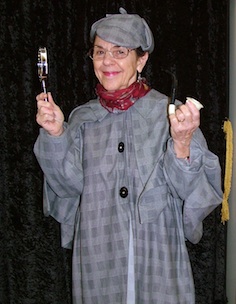Class Fiction: History+Mystery!
Elizabeth Varadan is a YA fiction author and a former middle grades teacher in Sacramento, California. While teaching, she integrated her lesson plans across the curriculum as much as possible. Art and reading (novels, mysteries, and biographies) related to class history lessons. Her own love of history began at an early age with historical fiction and mysteries.
Elizabeth now teaches an after-school art class for 8-to-12-year-olds at a local community center, and blogs about the Victorian Era. At her second blog, she writes about her travels with her husband, children’s fiction, and other topics that interest her. She’s currently writing an historical mystery for tweens.
Why Middle Grade Teachers Need Historical Mysteries in the Classroom Library
by Elizabeth Varadan
When I was teaching sixth grade, I stocked my classroom library with historical mysteries students could read for pleasure and use for hands-on projects to make history more meaningful.
While historical fiction helps a reader of any age access the past, a middle grade historical mystery provides an even greater hook.
Why a Historical Mystery?
A historical mystery presents an irresistible question that a reader wants answered. In Avi’s The Cross of Lead, set in 14th century England, a 13-year-old boy known as “Asta’s son” has to flee his village because of a crime he didn’t commit. In the course of his adventures, he learns his true name is Crispin. The mystery of why Crispin has enemies in pursuit and who his father was drives the twists and turns of the story.
In Rebecca Stead’s When You Reach Me, Miranda, a latchkey kid in New York of the 1970s, must figure out who broke into the apartment and stole the spare key and who is sending her mysterious notes, one of which suggests she can prevent a death. But whose?
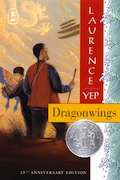
Our school had a culturally diverse population. These novels provided rich details about Chinese history and traditions that all students found interesting as well as entertaining mysteries. Since one of our social studies strands was on Ancient China, we followed up with a kite-flying contest using student-made kites, and we made paper and used bamboo brushes to paint pictures.
Luring the reluctant reader
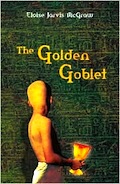
The Golden Goblet, by Eloise Jarvis McGraw, is a good example. Ranofer discovers his half-brother is robbing tombs—a crime punishable by death. Somehow he has to stop this without endangering or incriminating himself. My students stumbled through the geography and cultural practices of ancient Egypt, as well as complicated names, to find out if Ranofer would succeed, all because the story lured them on. Mara, Daughter of the Nile, also by Eloise Jarvis McGraw, and His Majesty, Queen Hapshetsut, by Dorothy Sharp Carter, provided intrigue and further information for class projects, in which students made pyramids with cut-away sections to reveal hieroglyphic wall paintings, tiny mummies and artifacts for the afterlife.
Victorian mysteries for the middle grades
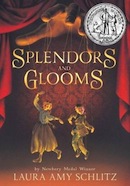
But Victorian era fiction — with vivid British characters and stories that fuel young readers’ imaginations — is a wonderful category for upper elementary and middle school classroom libraries. During this era the telegraph, telephone, electricity, indoor plumbing, and motorized vehicles were developed—inventions that transformed the world as dramatically as the space probes and the Internet are transforming our planet today.
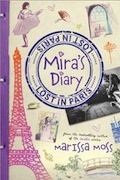
Marissa Moss’s brilliant new series, Mira’s Diary, featuring time-travel mysteries in various historical periods, begins with Lost In Paris, in which Mira encounters famous painters in 1880s France and finds she has a role to play in the famous Dreyfus Affair.
In Lewis Buzbee’s award-winning Victorian mystery, The Haunting of Charles Dickens, 13-year-old Meg Pickel and her friend, Charles Dickens, go sleuthing for her missing brother and uncover a kidnapping gang—not an unusual occurrence in an era when children had few rights.
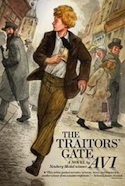
In Laura Amy Schlitz’s Victorian fantasy, Splendors and Glooms, set in 1860 London, 12-year-old Clara disappears the night of her birthday. The two orphans who help the novel’s puppet master learn that other children have mysteriously disappeared after his shows and that it’s up to them to rescue Clara. (A good follow-up project would be to put on a puppet show with scenes from the book.)
All of these books bring to life a world where most travel was horse-drawn, where communication was by post, where electricity was only for the rich, where children could be pressed into work gangs, and where single women could not venture out of their homes alone—a world where even the nobility would envy any one of the things we take for granted today.
Rich in mystery as well as history, they appeal to students’ love of adventure, puzzles, and strange locales — and most of all, to their unending curiosity about what life was like for children their own age long ago.

